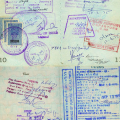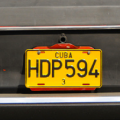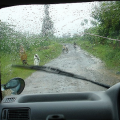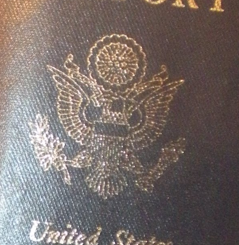India Travel Journal Part I

I’m having an Indian coffee in the Churchgate section of Mumbai, roughly 15 hours after my arrival here. Since then, I’ve come in from the airport, crashed at a sad hotel, changed hotels, changed money, and tried to begin the process of acclimation to a culture that is new to me.
Mumbai is not a good place to show up without a room reservation. I knew this from reading the guides, but despite a few late night Skype calls and two email attempts, I have no reservation.
I check out the option of booking a room at the airport kiosk, but I don’t have a good vibe about it. All of the hotels have names like “Supreme” and “Emerald” and “Majestic.” The booking guy keeps saying, “Trust me, sir, trust me.” In my experience, when someone at the airport keeps saying “Trust me,” you should start looking elsewhere.
I decide to take my chances in the city, and hire a taxi to take me into town. It costs $8 for a 90-minute ride, but the 90 minutes pass slowly with no a/c and a crazy driver. I pass a billboard that says “This New Year’s, don’t drink and drive.” It’s March 15. Then I see another one that says “Give blood at the blood bank, not on the road!” This seems like wise counsel to me, but my driver doesn’t speak English so I’m not sure how the message gets through.
The No-Star Hotel
After 90 minutes of riding along, we finally get to the Colaba district where I hope to stay. The first place I check is closed, the second place is way too expensive, so when I come to the third place I’m pretty much ready for anything. It’s nearly 6:00 a.m. Seattle time and I still haven’t slept. At the third place, I ask the porter how many stars this hotel has. (When I’m not staying in guesthouses, I try to stay in 2 or 3-star places, which are midrange in price and often a good bargain.)
He laughs. “This is a no-star hotel, sir,” he says in the very Indian way. Well, what choice do I have? I pay an incredible $55 to stay in the no-star Strand Hotel, which turns out to be fairly rated. I don’t think the Travel Board of India will be calling at the Strand anytime soon to award its first star.
But I’m able to sleep for seven hours, and that’s what matters. At 4:30 a.m., I get up and walk outside. For two hours I explore my new neighborhood, visiting the Gate of India and watching the city wake up. I find the local Salvation Army, which has a guest house I had read about online. I’m able to book a single room including three meals a day for $20. Even though it’s an equally basic property, I’m much happier there. I move my bags from down the street and have an Indian breakfast at a nearby restaurant for $1.30 in celebration of my new room.
I spend the rest of the morning in other parts of the city, visiting bookstores, watching street cricket matches, arguing with taxi drivers who lie about knowing where my destination is and then try to overcharge me. It’s all part of traveling, I remind myself.
Day Three – Immigration, Dhavari, and the Train
Check-out time at the Salvation Army is 9:00 a.m., so I leave my bags in the cloakroom and head out to spend another day in the city before going to Hyderabad late tonight. My first stop is for coffee at the Indian version of Starbucks. It’s called Barista and is a third of the price of Starbucks, for great coffee too. The clientele is half Indian and half foreigners. I read the hilarious Bombay Times and get ready for my day.
In the morning, my main task is to visit the Bureau of Immigration. Back in Seattle, I applied and paid for a multiple entry visa for India, knowing that I intended to cross over to Bangladesh before flying back to Japan from Mumbai. Three weeks later, I was dismayed to receive a single entry visa with no explanation. I called the San Francisco consulate to complain, but they had no sympathy. All I could do, they said, was to speak to the immigration officials after arrival in India.
I first tried discussing the matter with the immigration guys at the Mumbai airport when I came in, but they were not encouraging. There is no such thing as a transit visa in India, so apparently it is at the discretion of the authorities to let you in or send you back where you came from if you try to come without a valid visa.
This was not good news. I have a lot of experience traveling without visas in West Africa, but as I feared, India is far more efficient. There is a real chance that my trip to Bangladesh could prevent me from coming back to Mumbai. This would set off a whole series of unfortunate events—my Frequent Flyer ticket back to Japan would automatically be canceled, leaving me no way to get back to Tokyo. In Tokyo I’m scheduled to pick up my OneWorld Round-the-World ticket, which has a specific departure date. If I missed the first flight, the rest of the ticket would also be canceled. On and on it would go, and to top it all off, I would be stuck in Dhaka, Bangladesh for an undetermined amount of time. I haven’t been there yet, but the reviews of Dhaka aren’t very good.
For all these reasons, I need some assurance from the Indians before I set off. I hail a taxi, make sure the driver knows where he’s going, and ride out to the Bureau of Immigration at the Mumbai Police Department.
Unfortunately, the news at immigration isn’t good. Basically, only the head office in Delhi can change my visa or get me a new one. Delhi is 33 hours away. They give me a phone number I can try, but I’m not optimistic. The official tells me that if I try to do it without a visa, I will almost certainly be denied entry.
I leave feeling a little sad. My rule is to never pass up a country that I’m close to, and Bangladesh isn’t exactly on the way to anywhere else. Nor is it a Star Alliance or OneWorld hub, nor is there any practical reason why I’d need to go there in the next year or two. I decide to enjoy the rest of the day and think about this problem later.
This afternoon, I’m going on a tour of Dhavari, which will require me to be in a different frame of mind than worrying about whether I’ll get to Bangladesh or not.
Click to enlarge any photo:





Dhavari
I head out to Dhavari by local train. I’ve arranged to take a tour of the area by this group, which is one part business and one part NGO. On the walk out from the train station we get the brief overview: Dhavari is Asia’s largest slum tenement (no one likes that phrase, including me, but it helps you get the idea), with more than one million people living in a two square kilometer radius.
For three hours we walk through the city, talking with residents and learning about their way of life. Our guide, Krishna, does a great job of accenting the positive aspects of Dhavari life along with the negative. An amazing number of entrepreneurial projects have sprung up in Dhavari, and most of the population is involved in making something or tearing something down throughout the day.
Among other things, the city has set up a major recycling operation to break down the tons of plastic that come in from Mumbai and overseas. I think about the four large water bottles that I’m drinking every day while in India.
I find the experience of visiting Dhavari to be mostly encouraging, although of course there is still a great deal of poverty for most residents. Some of the New Yorkers from our group were a bit overwhelmed, but compared to a lot of places in Africa I think that Dhavari is developing well. The main problem seems to be how the government can provide better housing and sanitation for the one million residents, and that does not seem like an easy problem to solve.
Click to enlarge any photo:




Final Night In Mumbai
After the trip I take the train back to Mumbai, and head for dinner. I end up at another great local restaurant where I am the only foreigner and a large meal costs $1.80. What a great place.
Afterwards I have an hour before I head out, so I stop in one of Mumbai’s few pubs for a drink. My one beer costs $3, and I smile at the irony of the beer costing 60% more than the whole meal did.
The server in front of me is dancing and lip-syncing along to Hotel California. It’s comical to watch, but it’s also the only entertaining part of this bar. We move on to Piano Man and Stairway To Heaven before I decide I can’t take it anymore.
I leave the pub, walk back to the Salvation Army to get my bags, and hire a taxi to take me to the Central Train Station. I buy water and settle down to wait. I’m amazed at the throng of passengers waiting to travel—apparently 800,000 people pass through this train station every day. It seems that all 800,000 are here right now, but there’s little confusion and everything works remarkably well.
The train arrives promptly, ten minutes ahead of schedule, and I find my name posted outside the assigned carriage. I set up my bunk and say hello to the other travelers, all Indians. There are six of us in our compartment, but after the long day, I don’t spend much time being social. I go straight to sleep, wake up for the passport check and the guy who takes our order for breakfast (I have no idea what he’s saying, so I just answer “yes” to everything), and then sleep fitfully through the night.
At 5:30 I’m still sleeping, but the guy below me turns on the overhead light, waking up all the rest of us. Oh well. After I lie in the bunk for a while, I wake up and read. This morning I’m reading the Mumbai Mirror (headline: 93 of 95 Policemen Fail Fitness Test!) and a copy of The Atlantic I brought with me from the States.
I’m looking forward to getting to Hyderabad, and then to Calcutta a couple of days later. This time I have a room reservation, and I’ll be arriving at a reasonable hour with no jet lag.
The breakfast guy from last night returns with my order just before nine. It looks like I have some bread and a small omelet, which isn’t bad at all for the low price of 54 cents. 13 hours down, 4 to go.
Part III – Three Days in Calcutta
###
Image: Anoop








2 Comments
great post…love all your details…can’t wait to read the rest of your site…
Your comments are welcome! Please be nice and use your real name.
If you have a website, include it in the website field (not in the text of the comment).
Want to see your photo in the comments? Visit Gravatar.com to get one.